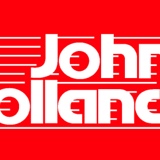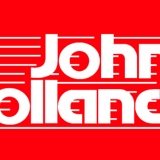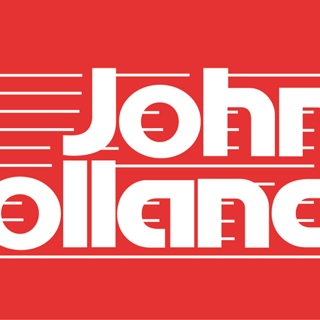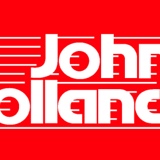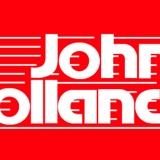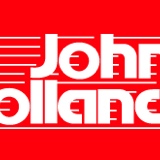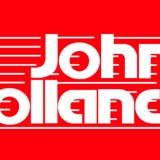Information
-
Document No.
-
Client / Site
-
Conducted on
-
Prepared by
-
Location
-
Personnel
GMR 1
GMR 1. Traffic, Plant and People. Intent: To prevent injury caused by the use of mobile plant / vehicles
GMR 1.1
-
A traffic management plan must be in place which seeks to eliminate reversing operations and identifies, eliminates and/or mitigates all traffic, plant and people interface.
GMR 1.2
-
Designated pedestrian routes must be physically separated from mobile plant and vehicle movement.
GMR 1.3
-
Vehicles and pedestrians must have physically separated site entry points.
GMR 1.4
-
Designated pedestrian crossing points that intersect with vehicle routes must be clearly identified and effectively controlled.
GMR 1.5
-
Loading/unloading zones must be clearly delineated with controls to prevent unauthorised access.
GMR 1.6
-
All overhead services and structures must be identified with appropriate control measures implemented to prevent collision by mobile plant and vehicles.
GMR 1.7
-
Mobile plant operators must be verified as competent and where required, licensed.
GMR 1.8
-
Effective communications must be maintained between mobile plant and vehicle operators and those controlling ground operations.
GMR 1.9
-
Mobile plant and vehicle operators must complete a pre-start and/or daily check to confirm safe working order.
GMR 1.10
-
All mobile plant and vehicles must be inspected, serviced and maintained in accordance with manufacturer and supplier recommendations.
GMR 1.11
-
A Plant Hazard Assessment must be completed by a competent authorised person for mobile plant.
GMR 1.12
-
Mobile plant and vehicles must not be modified outside of manufacturer's specifications unless that modification is engineered, certified and approved by a competent authorised person.
GMR 1.13
-
Operators of mobile plant and vehicles that have been subject to modification must receive appropriate information, instruction and training in relation to the modifications.
GMR 1.14
-
Where intended by design, persons must only ride in or operate mobile plant and vehicles from dedicated seating positions fitted with seat belts.
GMR 1.15
-
Troop carriers with side facing bench seats must not be used.
GMR 2
GMR 2. Excavation and Trenching. Intent: To prevent exposure to hazards during excavation and trenching activities
GMR 2.1
-
Prior to excavation and trenching activities commencing, a permit to work must be completed and authorised by a competent person.
GMR 2.2
-
Underground services must be identified, positively located, marked and where possible isolated prior to breaking ground.
GMR 2.3
-
In ground service locations must be communicated to all relevant stakeholders prior to activities commencing.
GMR 2.4
-
Excavations must be benched, shored or battered to a safe angle of repose or as determined by a competent person.
GMR 2.5
-
Safe means of access and egress must be maintained for all excavations and trenches.
GMR 2.6
-
Material removed during excavation and trenching must be stored in a location to reduce the potential for collapse.
GMR 2.7
-
Barriers, exclusion zones, lighting and/or signage must be provided to prevent people, plant, objects and equipment falling into excavations and trenches.
GMR 2.8
-
Controls must be in place to prevent the accumulation of fumes and gases in all excavations and trenches.
GMR 2.9
-
Excavations and trenches must be inspected by competent person before each working shift and after rainfall, or other events, which could impact ground stability or introduce further hazards.
GMR 3
GMR 3. Lifting Operations. Intent: To prevent harm to people from the risks associated with lifting operations
GMR 3.1
-
Crane commissioning, operation and decommissioning must be planned and managed by a competent person.
GMR 3.2
-
All lifts must be planned and managed by a competent person in accordance with the JHG Lift Planning Matrix.
GMR 3.3
-
Cranes, hoists or devices used for lifting or suspending a load shall not be overloaded.
GMR 3.4
-
Canes and lifting appliances must be regularly inspected, certified, tested and maintained, and comply with current Australian Standards.
GMR 3.5
-
Ground conditions must be assesses with appropriate controls implemented to ensure stability of the lifting device.
GMR 3.6
-
Plant and equipment used for lifting (including excavators, loaders etc) must be specifically designed and certified for the purpose of lifting.
GMR 3.7
-
Those persons engaged in lifting operations must be verified as competent.
GMR 3.8
-
Daily pre-start inspections and/or function tests must be completed for cranes and lifting appliances. Where defects are identified, equipment must be immediately tagged out of service.
GMR 3.9
-
Persons must never be suspended from or attached to a crane hook unless they are in a fit for purpose work box with appropriate controls and permits in place.
GMR 3.10
-
Physical barriers and/or other suitable controls must be used to exclude unauthorised persons from lifting operations. No loads must be lifted or suspended over people.
GMR 4
GMR 4. Electrical Safety. Intent: To ensure that people are protected from the risk of electric shock
GMR 4.1
-
An Electrical Works Management Plan must be developed prior to any electrical works.
GMR 4.2
-
A permit to work must be in place for work on electrical systems, installations and equipment.
GMR 4.3
-
Electrical work and supervision of electrical work must only be carried out by competent licenced electrical workers and /or electrical engineers.
GMR 4.4
-
Work on live electrical systems, installations and equipment must not be undertaken, except where deemed necessary by a competent and authorised person for the purposes of fault finding, testing/commissioning work or where the electrical supply cannot be interrupted.<br>
GMR 4.5
-
Sources of induced current must be identified and assessed with appropriate controls implemented.
GMR 4.6
-
All electrical circuits must be fitted with an appropriate protective device.
GMR 4.7
-
All exposed electrical parts and conductors, including earthing conductors, must be treated as live until proven otherwise.
GMR 4.8
-
All electrical installations and portable electrical equipment must be installed, tested and inspected in accordance with the relevant Australian Standards.
GMR 4.9
-
When working near live Overhead Line Equipment (OHLE) or live electrical parts, regulated safe working distances/exclusion zones must be maintained.
GMR 4.10
-
Electrical supply panels must be fixed and secured to prevent unauthorised access.
GMR 5
GMR 5. Working at Height. Intent: To prevent people and objects falling from height.
GMR 5.1
-
For all work at height, effective control measures must be implemented to prevent the fall of persons from any height, and the risk posed by falling materials.
GMR 5.2
-
The hierarchy of control must be applied when planning work at heights.
GMR 5.3
-
The perimeter of structures, edges, and working platforms must be protected by use of screens, guard rails and/or scaffolding systems to prevent persons or materials falling.
GMR 5.4
-
Protection from falling objects must be provided through primary controls such as edge protection, with exclusion zones and/or overhead protection provided as a secondary means of control.
GMR 5.5
-
Penetrations, shafts and risers must be protected to prevent the fall of people and materials.
GMR 5.6
-
Penetration covers must be robust, securely fastened and clearly identified.
GMR 5.7
-
Grid mesh or flooring material must be installed as per design requirements, secured at all stages of installation, and regularly inspected.
GMR 5.8
-
Roof mesh must not be used as a primary means of fall protection.
GMR 5.9
-
A harness should not be used as the primary means of fall protection. If, after exhausting other options there is no alternative to using a harness ( as primary protection)' this must be approved by the Business Unit General/Operations Manager and controlled by a permit to work.
GMR 5.10
-
Design and installation of anchor points must be approved by a competent person prior to use, and subject to regular inspection.
GMR 5.11
-
Ladders should only be used as a means of access and/or egress.
GMR 5.12
-
Those who plan, supervise and carry out work at height must have completed appropriate work at height training.
GMR 6
GMR 6. Fitness for Work. Intent: People present fit for work so that they do not expose themselves or others to harm.
GMR 6.1
-
All persons are required to present fit for work at all John Holland workplaces.
GMR 6.2
-
All persons are required to notify their manager / supervisor where they believe they might not be fit for work.
GMR 6.3
-
Persons presenting for work must not be adversely affected by illegal, prescribed, or over the counter medication and other drugs.
GMR 6.4
-
Persons presenting for work must have a blood alcohol reading of zero.
GMR 6.5
-
Fatigue risk management plans must be developed for all workplaces.
GMR 6.6
-
There must be a process in place to assess and manage circumstances where a person presents or is deemed unfit for work.
GMR 6.7
-
Workplaces shall implement a monitoring and testing program for alcohol and drugs.
GMR 7
GMR 7 Temporary Works. Intent: To prevent temporary works from collapsing and exposing people to harm
GMR 7.1
-
The planning, installation, alteration and dismantling of temporary works must be risk assessed and conducted by a competent person with relevant experience and qualifications.
GMR 7.2
-
Temporary works (e.g. Formwork, falsework, precast, shoring, back propping, temporary structures etc) must be identified, designed and and independently verified by appropriately qualified persons.
GMR 7.3
-
The designer must provide certification of the temporary works design that as a minimum takes into account the intended use, load tolerances, lifting calculations, access/egress, installation, and dismantling.
GMR 7.4
-
The design of temporary works must be verified by an appropriately qualified and competent person who is independent of the designer.
GMR 7.5
-
Installation of temporary works in accordance with the design must be verified by and appropriately qualified and and competent person prior to initial use and loading.
GMR 7.6
-
No changes to installed temporary works must be made without prior acceptance of the designer, and if considered necessary, further design certification and independent verification of the changes.
GMR 7.7
-
Certification, verification and regular inspection of temporary works must be conducted by competent persons.
GMR 7.8
-
Temporary works must be physically protected and secured where there is a risk of collision, or damage through adverse weather conditions or adjacent work practices.
GMR 8
GMR 8. Isolation Intent: To prevent harm caused by exposure to energy sources.
GMR 8.1
-
A permit to work must be obtained and in place for the isolation and de-isolation of energy sources. The permit conditions must specify the test requirements for the presence of hazardous materials / stored energy.
GMR 8.2
-
Isolation and de-isolation must be planned, with the method for the removal and restoration of stored energy or hazardous materials risk assessed and authorised by a competent person.
GMR 8.3
-
Physical isolation and de-isolation must be completed by a competent and authorised person.
GMR 8.4
-
All isolation points must be clearly identified, proven, tagged and controlled to prevent inadvertent energising.
GMR 8.5
-
Prior to breaking containment systems, a test for hazardous material/stored energy must be performed with risk controls in place.
GMR 8.6
-
The isolation of electrical energy must be confirmed by a competent and authorised person prior to work commencing. The isolation status must be retested after any break or change in conditions.
GMR 8.7
-
Isolation controls and their effectiveness must be subject to ongoing monitoring.
GMR 8.8
-
All guarding and safety systems must be reinstated upon completion of the work prior to de-isolation.
Administration
Administration To ensure that GMRs are embedded into John Holland workplace safety documentation.
Workplace Risk Assessment / Project Risk Register
-
GMRs are embedded / referenced in the WRA
Activity Method Statements (AMS)
-
GMRs are embedded / referenced in the AMS
Workplace Safety Management Plan (WSMP)
-
GMRs are embedded / referenced in the WSMP
Task Risk Assessments (TRA)
-
GMRs are embedded / referenced in TRAs
Workplace specific safety documents
-
GMRs are referenced in project-specific safety inspection checklists
-
GMRs have been included in the project specific site induction
GMR training and rollout
-
GMRs have been rolled out on the project and evidence of training is available






